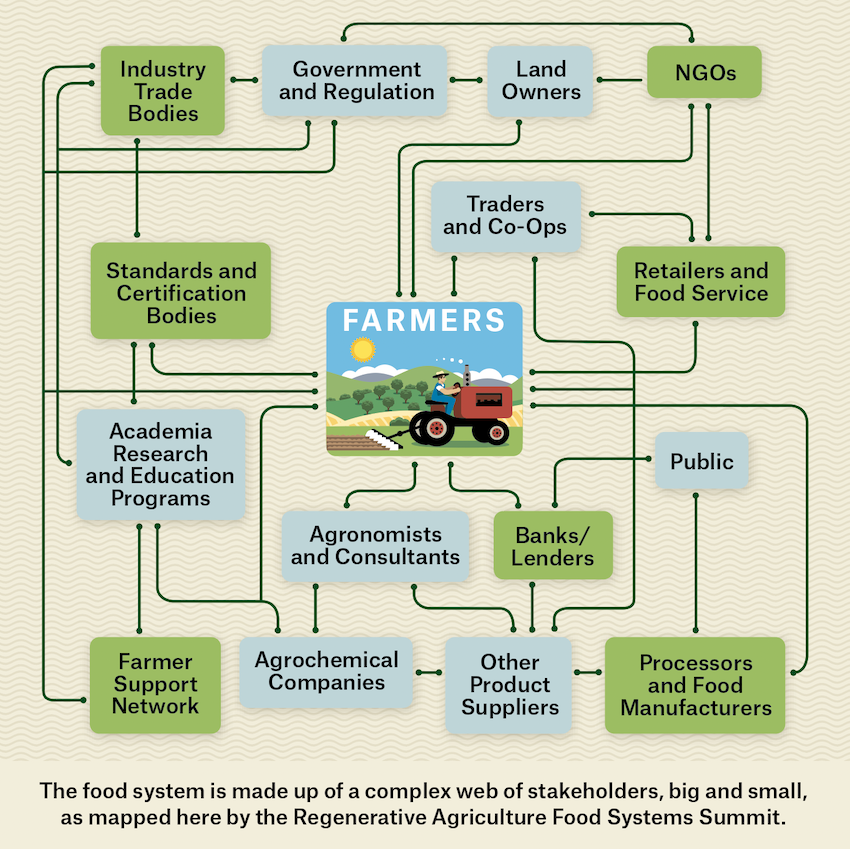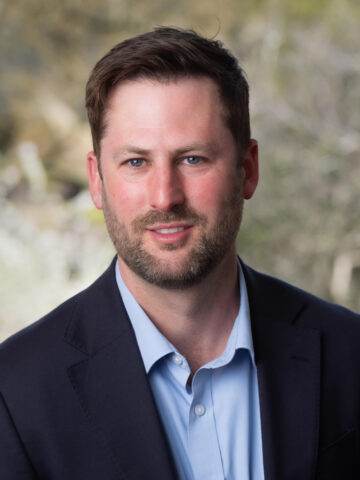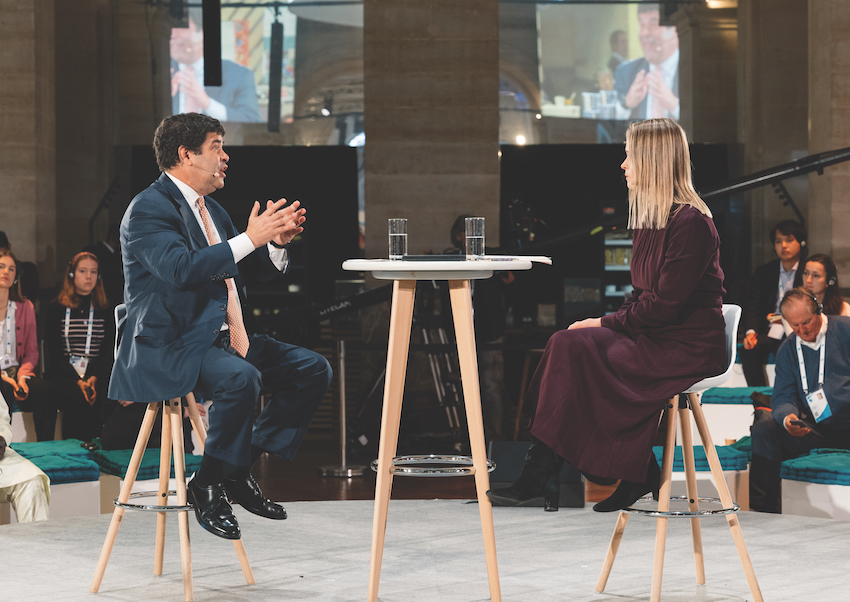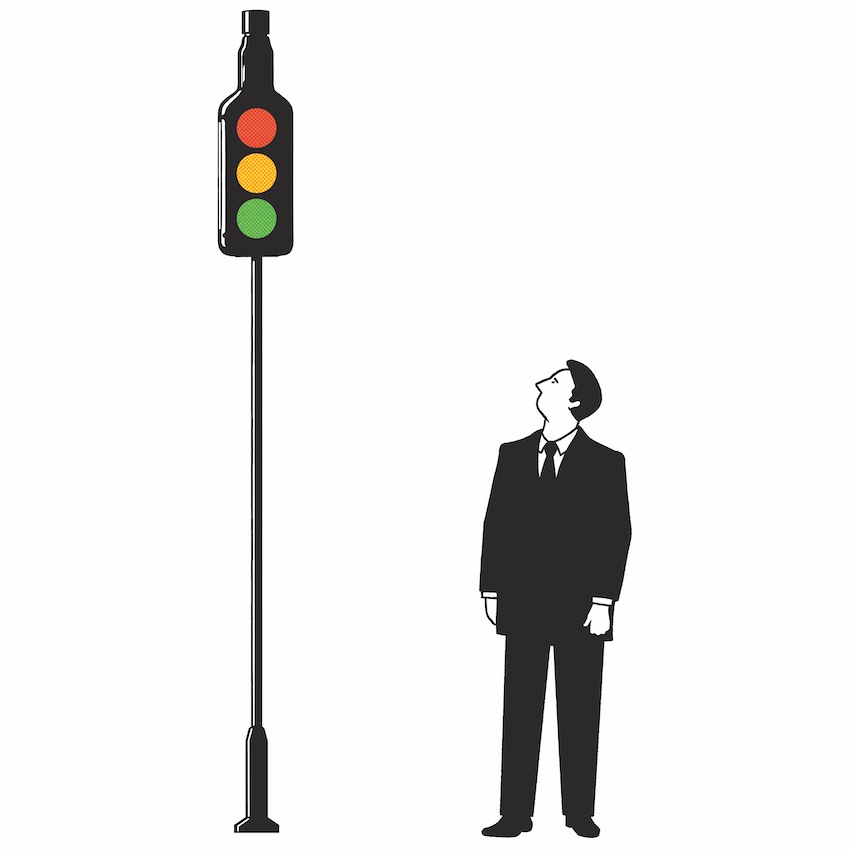Brunswick’s Phil Drew and Tarini Kumar talk to Morgan Gillespy, Executive Director of the Food and Land Use Coalition at the World Resources Institute, about an end-to-end systemic transition.
The way we produce and distribute food is beset with inefficient and unsustainable practices that damage our planet and, indeed, our health. It is a systemic problem that requires a broad reconsideration of the goals of the production of goods throughout the value chain and beyond. Governmental structures, clothing, construction, marketing, fashion, health and cultural and social behaviors all need to be part of the conversation.
As Global Executive Director of the Food and Land Use Coalition, or FOLU, for the World Resources Institute, Morgan Gillespy oversees strategies to meet Paris Agreement goals. FOLU consists of nine global institutions, each with its own organizational strategy and drivers, that work with governments, NGOs, financial institutions and business to transform food and land use systems. Prior to her current role, Gillespy was Global Director of Forests at CDP, where she supported companies in their efforts to track and measure impacts on deforestation.
How do you define the food system?
At FOLU, we talk about a “food and land use system.” These systems are totally linked; we can’t talk about food without thinking about where it comes from. So the term food and land use system covers every factor in the way that land is used and food is produced, how it’s stored, how it’s packed, processed, traded, distributed, marketed. And then how we consume it and potentially dispose of it.
This touches on the social: How do we feel about food? How do we celebrate with food? What are our customs as they relate to food? And it touches on economics: Can we afford to buy the food? And the environmental: What about the emissions or pollution produced? We also want to recognize and appreciate that agriculture is used for non-food purposes—bio energy, for example, or wood or cotton. Those are agricultural uses that are not necessarily for food. So food and land use systems covers the whole remit, from production, distribution, to consumption of food and inclusive of non-food productive agriculture uses.
Why is a transformation needed by 2030?
FOLU published a report in 2019 called “Growing Better” that articulates the economic necessity for transforming food systems. Our food and land use systems currently cost $12 trillion per year in damage to people and planet. Health costs are about $7 trillion, environment is about $3 trillion, and economic losses are about $2 trillion. These systems are not serving the purposes that they were built for. We are not successfully feeding the world in sustainable, equitable or nutritious ways. If we do nothing to change the system, these costs will rise to $16 trillion per year by 2050.
Some 2 billion people don’t have regular access to sufficient safe and nutritious food. Since COVID the number of malnourished and food insecure are increasing dramatically. Linked to that, a third of all food produced globally is either lost or wasted. We’re overproducing food on the one hand and throwing it away on the other. From an environmental perspective, our food and land use systems are also responsible for about 30% of global greenhouse gas emissions, contributing to climate change that is hurting agriculture.
So we need to transform food systems to fix the economics, human health and the environment.
What is the vision for a positive outcome?
In that report, we outline 10 critical transitions, articulated in terms of kind of an apex of a pyramid. At the top are healthy and nutritious diets. We really believe people need to be put first, both people consuming food, but also people producing the food. It also means people can afford the food that they need to buy and have access to fresh fruits and vegetables, to an increasingly plant-based diet, but where they need access to dairy or meat products, they have it.
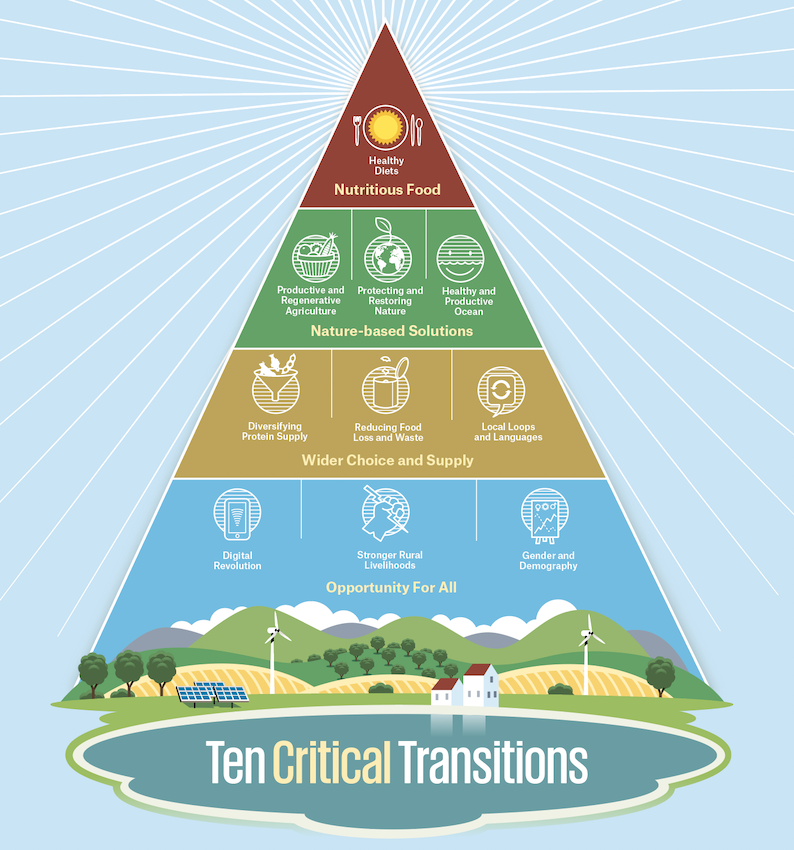
Right now, our agricultural systems tend to be extractive. We take nutrients out, pollute the water and the earth with fertilizer or chemicals. Over-watering in some areas, or not managing soil quality so it can absorb water. And we’re not leveraging agriculture for its emissions reduction capabilities.
We want to flip that on its head. We want to have regenerative productive systems, where we’re increasing biodiversity, increasing the quality and the quantity of our fresh-water supplies, reducing the chemical input. Emissions are really an important piece of the puzzle, as climate change causes climatic disasters for agriculture. Food loss and food waste alone contribute 8% of GHGs in the world.
Access to healthy diets; a regenerative system that is still producing high yields, so enough food to feed the world; a protection and restoring of nature; and perhaps halving food loss and food waste by 2030—that’s the vision that we’re seeking to deliver.
The Food and Land Use Coalition’s pyramid outlines how 10 critical transitions are necessary for the sustainable production of food and use of land.
At the top of the pyramid is affordable, healthy diet for all—predominantly plant-based, with more fruits, vegetables and whole grains, diverse protein sources and reduced sugar, salt and highly processed foods. This requires businesses to realign goals and standards, but by 2030 represents a potential $2 trillion business opportunity.
Nature-based solutions are the second tier, including: better agricultural systems toward productive and regenerative farming; protection and restoration of nature, requiring a massive investment to return approximately 300 million hectares of tropical forests to health by 2030; better fishing and aquaculture to deliver increased supply of ocean proteins, restoring coastal and marine habits, and curbing nutrient and plastic pollution. Combined, the actions in this tier represent over $1 trillion in business opportunity.
The third tier is made up of transitions that expand consumer choice and supply. Rapid development of diversified sources of protein would complement the global transition to healthy diets, expected to account for well over 10% of the protein market by 2030; reducing food waste by 25% would lead to significant benefits for society and the environment; and towns and cities—representing 80% of food projected to be consumed by 2050—need more sustainable food economies.
Finally, the pyramid’s foundation puts opportunity for all at the heart of the transformation. Digitization empowers people rather than concentrates data; investment made in the talent, infrastructure and social systems can aid a rural renaissance; and supporting women to make choices that are better for themselves, their families and communities, can unleash the true potential of all people-driven solutions and accelerate a demographic transition to a replacement rate of fertility in all countries, adding an estimated $195 billion to the global economy. For more information, read the FOLU 2019 report “Growing Better: Ten Critical Transitions to Transform Food and Land Use.”
How did you arrive at a systems-level view?
Our societal structures are pretty siloed. You see that across the board. Governments have a ministry of health and a ministry of agriculture. And those two don’t necessarily talk to each other. “Are we growing nutritionally dense crops? Are we growing the food that we need to make sure people are healthy?” Weirdly, they don’t have those conversations.
Even with NGOs—we have a climate team, a forest team, a water team. Everyone gets so specific about their content knowledge area that you forget to take a step back and look at the bigger picture, and how these things are interlinked.
If you want to deal with access to food, you have to think about transport and energy. You have to look at it in an integrated way, in a systemic way. Doing that, you could unlock these triple wins on the economics, health and environment.

“You have to look at it in an integrated way, in a systemic way. Doing that, you could unlock these triple wins on the economics, health and environment.” – Morgan Gillespy
How do you define regenerative agriculture?
What we’ve been advocating for is to focus on outcomes. And that’s really simple. We want greenhouse gas mitigation, improved fresh-water security, increased biodiversity, improved soil health and soil functionality. If we can focus on those outcomes, we don’t necessarily need to argue about what the definition is. We can’t expect a commercial farmer in Iowa in America to deploy the same farming practices as a smallholder farmer in West Papua in Indonesia.
It’s absolutely critical that we take a farmer-centric approach to this, so that they’re building resilience for their own farms. What are their current practices? How are they looking to shift their practices? What data, research, knowledge, technical skills or financial resources might they need?
A question that’s not often talked about: Do corporates have a responsibility to try to generate demand for regenerative products? The global advertising spend of a fast-moving consumer goods company can be in the billions. Companies say they don’t have demand for sustainable products. Well, how much of your advertising spend are you utilizing to promote them?
Where are you seeing momentum?
Ten years ago, trying to talk to businesses and investors about climate change was hard work. I’ve had the conversation about fresh-water security over 10 years and they often didn’t get it. And now they do. Same with halting deforestation. Now I’m having conversations with them about why they need to deal with food systems as an integrated holistic mechanism that will enable them to deliver on their climate objectives, water objectives, deforestation objectives. And they get it. “Oh, wow. I can deal with everything at once. Food is the entry point into these interrelated poly-crises.” So that’s really powerful. That momentum is what is giving me hope.
What first steps should companies take that are just starting on this journey?
Just get involved. The first step is look into it. Understand what your business is, what the risks potentially are to your business—from an environmental, a physical, a regulatory or reputational perspective. What are the opportunities for your business to address those risks? What would a transition plan to a food systems approach look like?
Don’t be afraid to ask for help. There are a whole bunch of NGOs geared up to hold businesses’ hands and take them through this process: setting a science-based target, joining We Mean Business or the World Business Council for Sustainable Development, one of the coalition partners within FOLU. There is oodles of help out there. So just get started. That’s the message. Don’t wait. Do something.
—
Additional reporting by Tarini Kumar, a Director based in London.
More from this issue
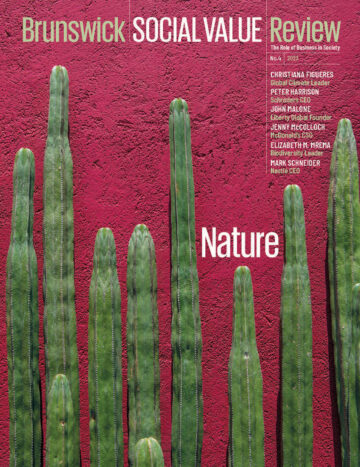
Nature Positive
Most read from this issue
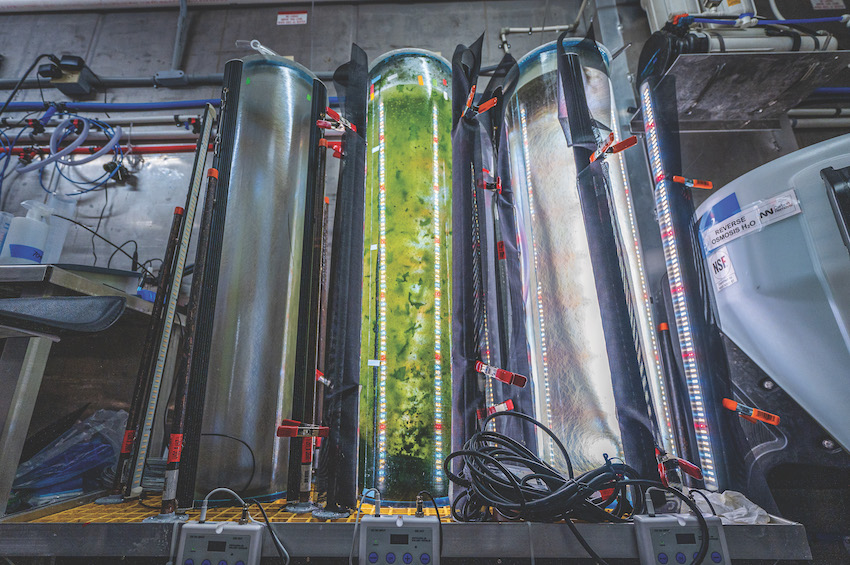
An Operating System for the Ocean

